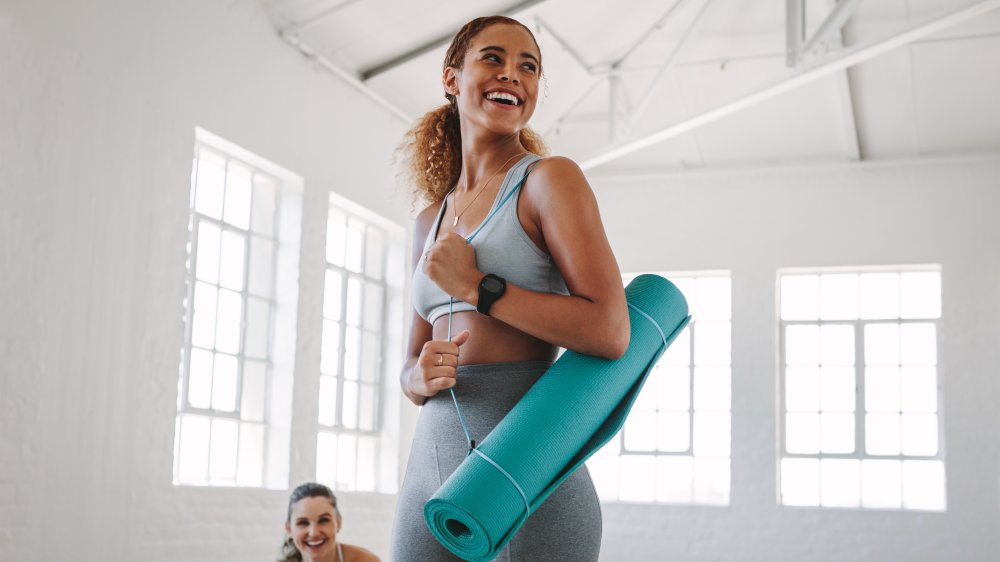If You're Not Sore After Working Out, This Is Probably Why
"Better sore than sorry!" fitness trainers are known to say, urging you to hit the gym instead of sleeping in. What, though, if you exercise... but don't feel even slightly sore the next day? Your calves don't hurt, your quads aren't on fire, and your abs don't feel like you got punched in the gut? Does that mean your workout didn't... work?
Not at all. That feeling of tightness after strenuous physical activity is called delayed onset muscle soreness, or DOMS (via WebMD). We get DOMS when we've exercised a muscle that hasn't gotten much use recently; once we are well-conditioned, we still get gain — just without pain. "If you're not sore after a workout, it doesn't mean that you didn't work out," celebrity trainer Chase Weber told Well + Good. "Soreness just means you worked a muscle that hasn't been worked in a while, or that the muscle didn't have enough endurance. You also can get sore from a workout if you didn't eat enough food or hydrate properly before you hit the gym, Weber added.
If anything, not being sore after a workout means you are in great shape! (Go, you!) "Potentially your muscles have adapted to the workload you put them through," strength and conditioning coach and CrossFit athlete Emma Kirk-Odunubi told Insider. "[T]hat's not necessarily a bad thing though!"
How to tell if you're working out hard enough
Still, is possible that you're not sore because you didn't work hard enough; people who walk on a treadmill that's barely moving likely aren't going to waddle around the next day, moaning, "Everything hurts!" That being said, it's easier to monitor your exertion level while you're in the middle of a workout — not a day later, when you're wondering why your muscles feel absolutely fine.
To make sure the lack of soreness isn't due to lack of effort, wear a heart rate monitor (via Health). You should see your resting heart rate climb to about 75 percent or more of your maximum while doing cardio. If you don't happen to have a FitBit or Apple Watch lying around, a free and low-tech way to gauge your rate of perceived exertion is to see whether you could easily have a conversation during your workout. If you can speak comfortably in full sentences, it's time to crank up the intensity (via VeryWellFit).
Another low-tech way to tell if your workout is challenging: the armpit test. Check whether you're sweating; if you're not, you should be. "You should break a sweat when you train and should see [or feel] a spike in your heart rate," personal trainer Jimmy Minardi told SELF.


